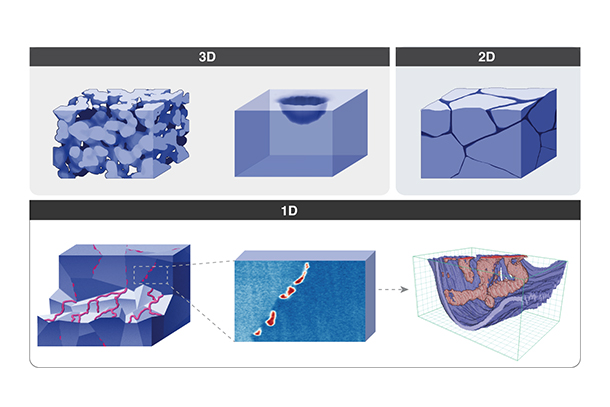Researchers develop energy-efficient memory sensor for wet, salty environments – Berkeley Engineering

Report on a Novel Memsensor and its Contribution to Sustainable Development Goals
A recent technological breakthrough at UC Berkeley has resulted in the development of an innovative in-memory sensor (memsensor) with significant potential to advance several United Nations Sustainable Development Goals (SDGs). The device, which utilizes the phase-shifting properties of vanadium dioxide, can operate without external power, offering a new paradigm for energy-efficient sensing and computing, particularly in aqueous environments.
Technological Innovation and Functionality
The research, led by Professor Junqiao Wu and detailed in Nature Materials, centers on a novel application of vanadium dioxide, a material known for its ability to transition between insulating and metallic states.
H3: Core Mechanism
The memsensor is constructed by applying a thin layer of vanadium dioxide to an indium substrate. When introduced to a saline solution, the device operates as follows:
- Indium releases ions into the solution at the material interface.
- In-built electric fields draw these ions to the vanadium dioxide surface.
- The accumulation of ions induces a phase change in the vanadium dioxide, altering its state to become more metallic.
- This change in electrical resistance is persistent and directly correlates with the salt concentration of the solution, effectively creating a memory of its chemical environment.
Crucially, this entire process of sensing and data storage occurs spontaneously, without any external voltage or complex circuitry.
Alignment with Sustainable Development Goals (SDGs)
The memsensor’s unique characteristics directly support progress toward key SDGs, particularly those related to energy, water, and sustainable innovation.
H3: SDG 7: Affordable and Clean Energy & SDG 12: Responsible Consumption and Production
The device’s ability to function without external power represents a significant step forward in energy efficiency. This contributes directly to:
- SDG 7: Promoting energy-efficient technologies that reduce the overall power consumption of electronic systems.
- SDG 12: Enabling the development of more sustainable electronic products with lower energy footprints and simplified designs, reducing material waste.
H3: SDG 6: Clean Water and Sanitation & SDG 14: Life Below Water
The sensor is designed to operate effectively in wet, saline environments, making it ideal for applications in water management and marine science.
- SDG 6: The technology can be deployed for low-cost, low-power monitoring of water quality and salinity in freshwater sources, wastewater treatment facilities, and contaminated sites.
- SDG 14: It enables the creation of autonomous, low-impact aquatic robots for exploring and monitoring marine ecosystems, assessing pollution levels, and gathering data without disturbing delicate underwater environments.
H3: SDG 9: Industry, Innovation, and Infrastructure & SDG 11: Sustainable Cities and Communities
This breakthrough is a prime example of foundational research that fosters sustainable industrial and urban development.
- SDG 9: The memsensor represents a significant innovation that can be integrated into resilient infrastructure, such as smart water grids and industrial process monitoring systems.
- SDG 11: It provides a tool for building smarter, more sustainable cities through advanced environmental sensing networks that operate with minimal energy overhead.
Biomimicry and Future Applications
The design was inspired by the nematode C. elegans, which uses specialized neurons to remember salt exposure and navigate its environment. The research team demonstrated a similar capability by using the memsensor to guide a small robotic boat through varying salt gradients.
H3: Future Prospects for Sustainable Technology
The underlying principles of this technology open pathways for future advancements that align with global sustainability targets:
- Adaptive Robotics: Development of low-power, autonomous robots capable of navigating and performing tasks in complex or contaminated underwater environments.
- Brain-Inspired Computing: The potential for creating computing systems that operate in aqueous environments, mimicking the brain’s ability to sense, process, and store information in a wet, ionic medium. This could lead to highly efficient, integrated platforms for chemical and biological analysis.
Conclusion
The development of the vanadium dioxide memsensor is a critical scientific achievement with far-reaching implications for sustainability. By providing a power-free method for sensing and memory in aqueous systems, this innovation offers a tangible pathway to advancing goals for clean energy (SDG 7), clean water (SDG 6), marine conservation (SDG 14), and sustainable innovation (SDG 9). Its future applications in robotics and computing promise to further embed principles of energy efficiency and environmental stewardship into next-generation technologies.
1. Which SDGs are addressed or connected to the issues highlighted in the article?
-
SDG 9: Industry, Innovation, and Infrastructure
- The article focuses on a scientific breakthrough and an “innovative design” using vanadium dioxide. The development of a new “in-memory sensor, or memsensor” represents a significant advancement in materials science and engineering, directly contributing to innovation. The text states this “breakthrough could pave the way for simpler, more energy-efficient sensors and adaptive robots,” highlighting its potential impact on future industries and infrastructure.
-
SDG 7: Affordable and Clean Energy
- The new memsensor is described as highly energy-efficient. The article explicitly states that it can “sense and store this information without the need for any external voltage” and operates “without external power input or complex circuitry.” This innovation contributes to the goal of improving energy efficiency.
-
SDG 14: Life Below Water
- A key application of the technology is for “low-power aquatic robotics.” The article suggests these robots could “explore underwater or contaminated environments while adapting their movements like living organisms.” This directly relates to developing technology for monitoring and potentially managing marine and aquatic ecosystems, including those affected by pollution.
2. What specific targets under those SDGs can be identified based on the article’s content?
-
Target 9.5: Enhance scientific research, upgrade the technological capabilities of industrial sectors
- The entire article is about a scientific study published in Nature Materials, which is a form of enhancing scientific research. The development of the memsensor is a direct result of over a decade of research by Professor Junqiao Wu and his lab. The potential applications in “adaptive robots” and “next-generation computing systems” point to upgrading technological capabilities.
-
Target 7.3: By 2030, double the global rate of improvement in energy efficiency
- The memsensor’s ability to function “without external power input” is a significant improvement in energy efficiency for sensor technology. The article emphasizes its “fast, energy-efficient” nature, which aligns with the goal of improving energy efficiency in technological applications.
-
Target 14.a: Increase scientific knowledge, develop research capacity and transfer marine technology
- The development of memsensing technology for “low-power aquatic robotics” is a clear example of increasing scientific knowledge and developing research capacity for marine applications. The technology is designed to operate in “wet, salty systems” and could be used to “explore underwater or contaminated environments,” representing a transfer of materials science technology to the marine field.
3. Are there any indicators mentioned or implied in the article that can be used to measure progress towards the identified targets?
-
Indicator for Target 9.5
- Development of new technologies and scientific publications: The article itself, being a report on a study published in a major scientific journal (Nature Materials), serves as an indicator of progress in scientific research. The creation of the “new in-memory sensor, or memsensor” is a tangible outcome of this research.
-
Indicator for Target 7.3
- Energy consumption of sensors: The article implies a clear metric for energy efficiency by stating the memsensor operates “without external power input or complex circuitry.” Progress can be measured by the reduction or elimination of external power requirements in new sensor designs compared to conventional ones.
-
Indicator for Target 14.a
- Functionality in specific environments: The article implies progress can be measured by the technology’s performance in relevant conditions. The memsensor’s ability to “efficiently interface with wet, salty systems” and its successful use in navigating a robotic boat through “varying salt gradients” are indicators of its readiness for aquatic applications. Its potential to “explore underwater or contaminated environments” provides a benchmark for future development.
4. Table of SDGs, Targets, and Indicators
| SDGs | Targets | Indicators |
|---|---|---|
| SDG 9: Industry, Innovation, and Infrastructure | 9.5: Enhance scientific research, upgrade the technological capabilities of industrial sectors. | Development of new technologies (e.g., the memsensor) and scientific publications on innovative materials. |
| SDG 7: Affordable and Clean Energy | 7.3: Double the global rate of improvement in energy efficiency. | Reduction of energy consumption in sensors, specifically the ability to operate “without external power input.” |
| SDG 14: Life Below Water | 14.a: Increase scientific knowledge, develop research capacity and transfer marine technology. | Successful application of new sensor technology in aquatic robotics designed to “explore underwater or contaminated environments.” |
Source: engineering.berkeley.edu

What is Your Reaction?
 Like
0
Like
0
 Dislike
0
Dislike
0
 Love
0
Love
0
 Funny
0
Funny
0
 Angry
0
Angry
0
 Sad
0
Sad
0
 Wow
0
Wow
0












































































